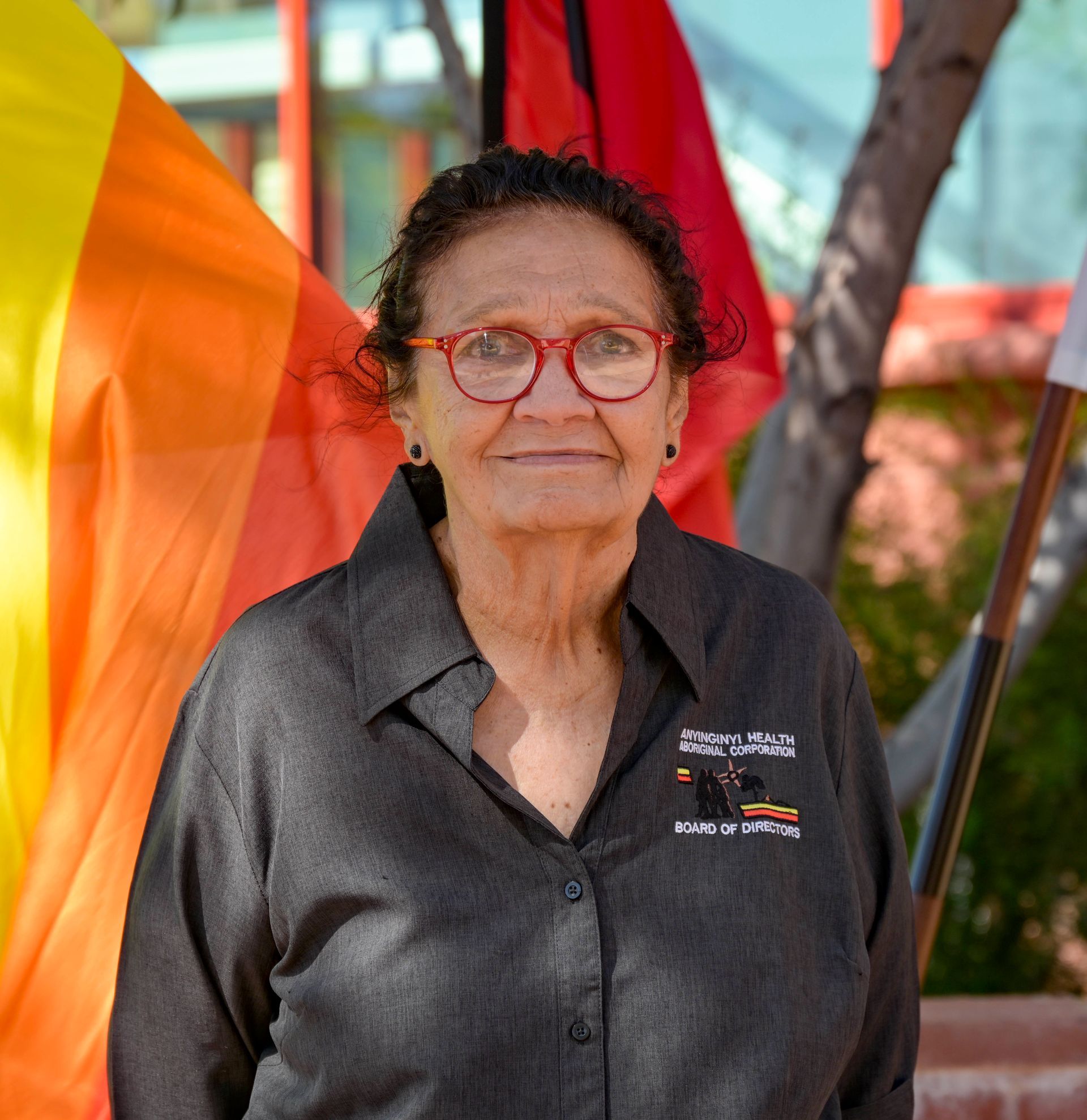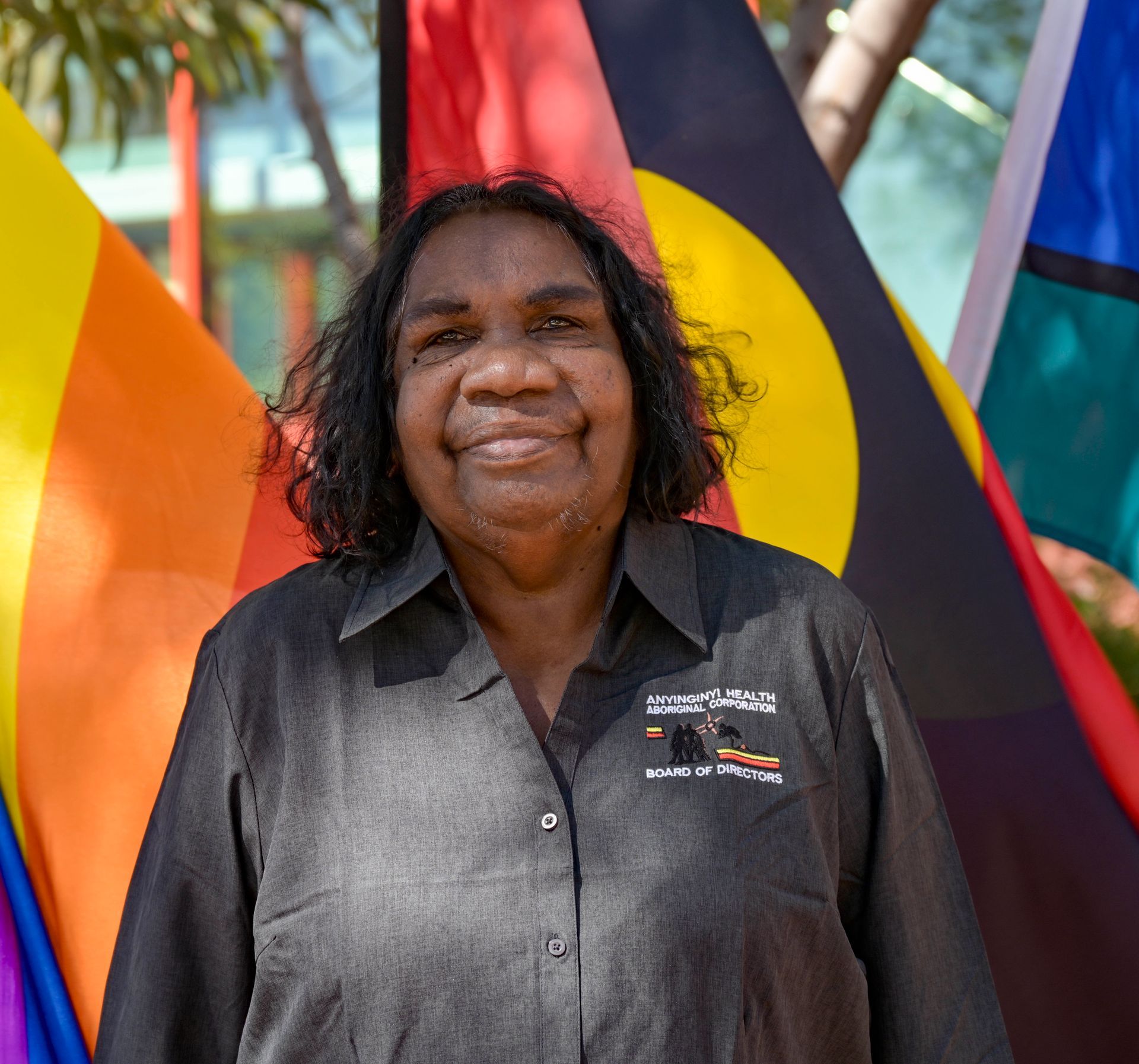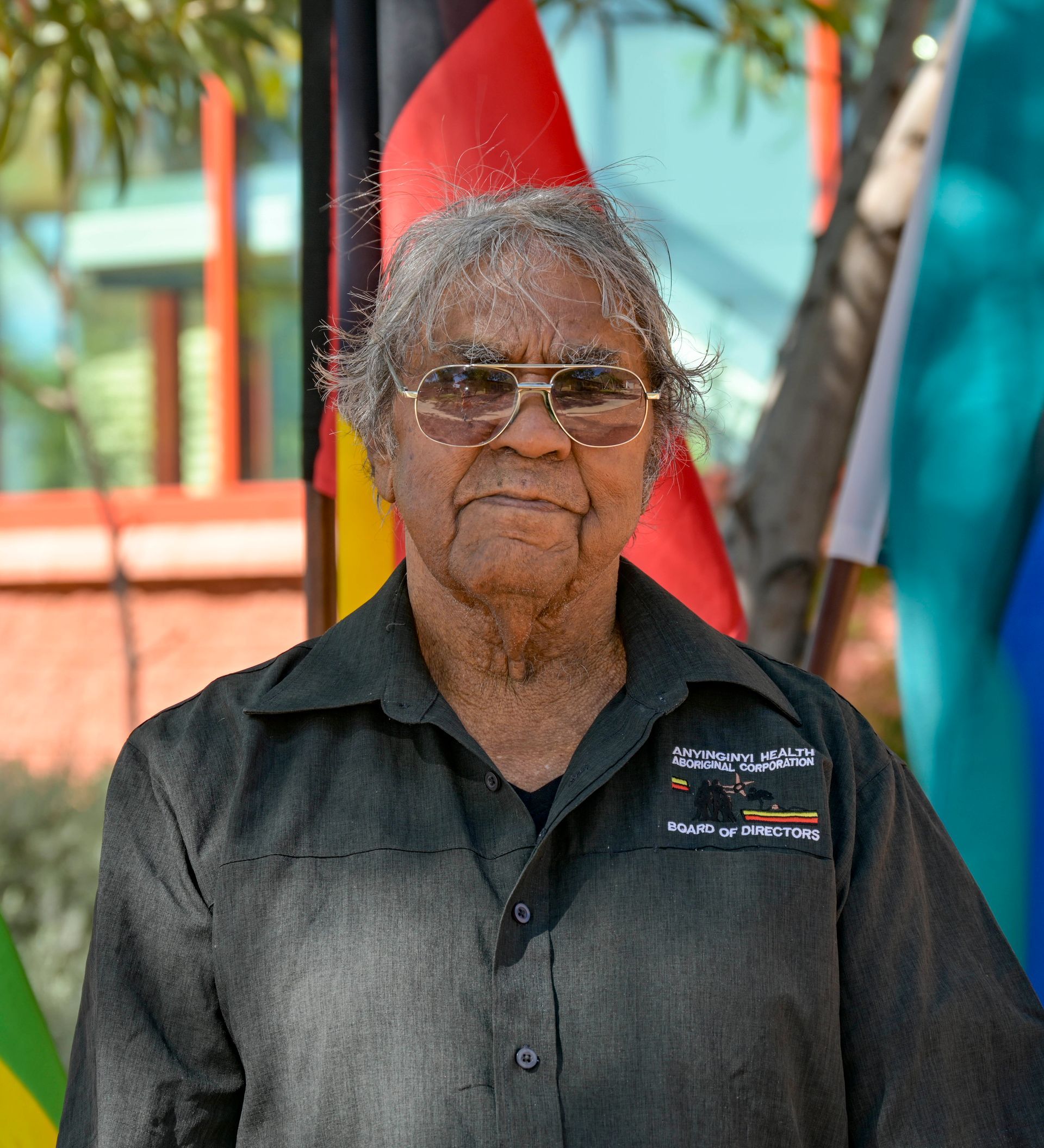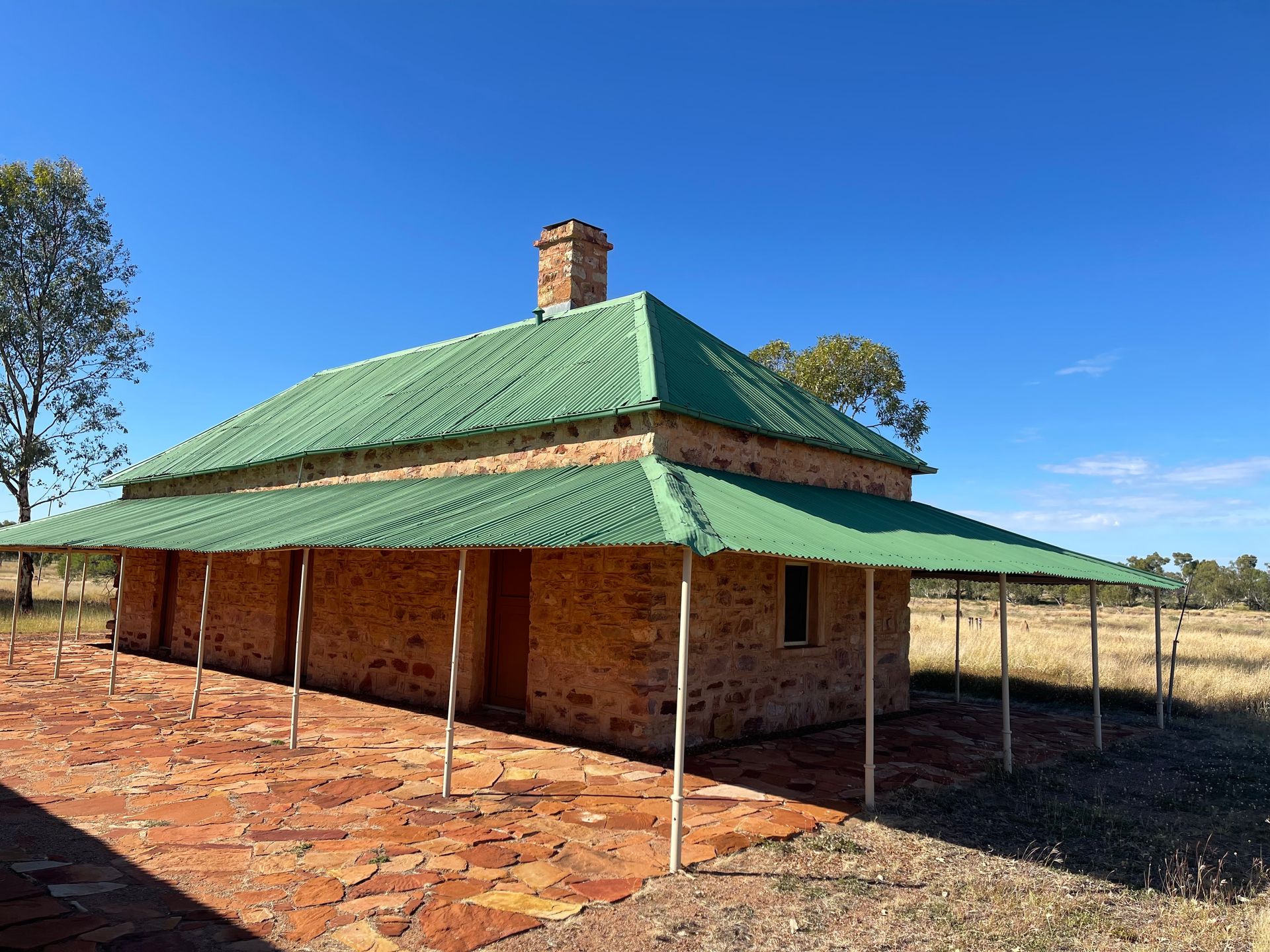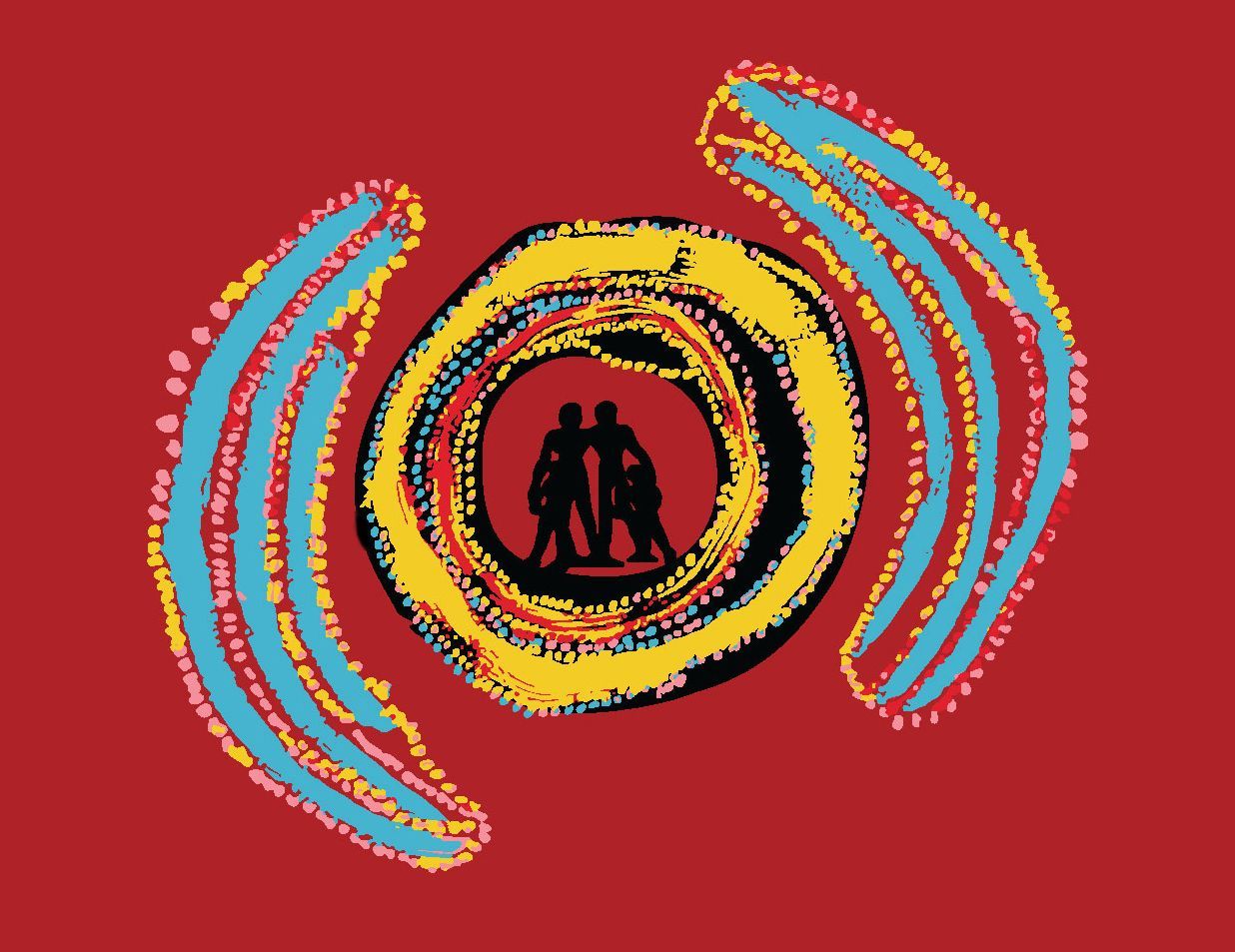Discover Our Tennant Creek Health Services
Anyinginyi Health Aboriginal Corporation provides primary health care services to Aboriginal people of Tennant Creek and four small communities.
Community controlled and governed by a board of directors, six service sections make up the organisation:
- Anyinginyi Health Services
- Piliyintinji-ki Stronger Families Section
- Public Health Section
- Business Services Section
- People and Capabilities Section
- Corporate Governance
Anyinginyi Health service delivery area totals almost 150,000 square km. It stretches north of Tennant Creek to Elliott, eastward almost to the Queensland border and south to Ali Curung. We provide services to over 7500 people.
Our Vision
Barkly Aboriginal Communities are healthy, thriving, and happy places.
Our Purpose
The provision of high quality flexible primary health care services within a culturally responsive framework to Aboriginal people of the Barkly.
Board of Directors
Anyinginyi Health is a community controlled Aboriginal health organisation governed by a Board of Directors that are voted in by members of the organisation.
The Board of Directors provide strategic direction for the leadership team and give a voice to all residents in the Barkly Region.
Anyinginyi Health’s day-to-day operations are managed by our leadership team who have diverse qualifications and experience.
Corporation Membership
Membership of Anyinginyi Health Aboriginal Corporation is open to residents of the Barkly region. Applications are welcome from people of Aboriginal descent, aged 18 or over, who have lived in the region continuously for at least 2 years.
Full criteria are listed in part 3.1 of the Anyinginyi Health Rule Book (AH Constitution)
To apply
Download and fill out the Membership Form.
Completed forms can be returned to Anyinginyi Health Aboriginal Corporation, by any of the following:
Hand deliver | 1 Irvine Street Tennant Creek, or
Email |
reception@anyinginyi.com.au, or
Mail | PO BOX 403, Tennant Creek NT 0861
- Membership forms will be taken to the next Board meeting for Directors' consideration.
- An applicant becomes a member when their name, address, and date of admission are entered into the register of members within 14 days of approval.
- Members names (but not addresses) are listed on the Office of the Registrar of Indigenous Corporations (ORIC) website.
Rights of members
Members can:
- attend, speak and vote at general meetings
- put forward resolutions at general meetings
- be made a director, if eligible
Further information on members’ rights and responsibilities are listed on page 6 of the AH Rule Book.
Governance
Anyinginyi Health is governed by an Aboriginal Board. The Board performs its duties with the support of management and staff, in line with the objectives of our constitution and relevant Commonwealth and Territory laws. The Board also regularly consult with members of the community.
We recognise culture is intrinsic to achieving health education and change in Aboriginal people. We operate within a Cultural Framework that supports a cultural environment.
The Anyinginyi Health Board aims to:
- Embed cultural responsiveness and behaviours into operational and employee functions
- Have clear objectives and functions understood by members
- Be made up of directors who are representative of various interest groups while balanced with the skills required for good governance
- Show transparency in structure and decision making
- Implement evidenced-based goals and strategies
- Invest in resources that are responsive to community needs.
Primary Health Care Model
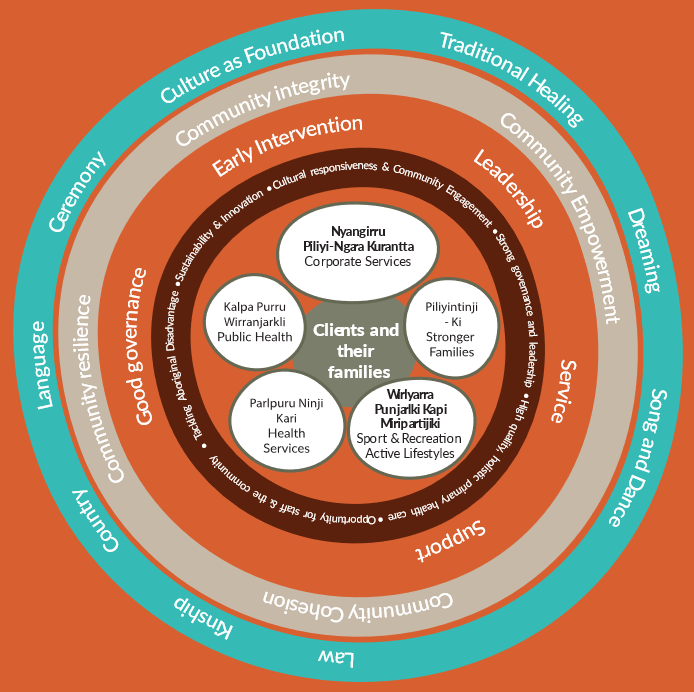
Anyinginyi Health adopts a social community development approach to delivering primary health care ensuring Aboriginal people have the right to affordable, accessible and appropriate health care. Primary Health care has a broad focus on the social conditions and environment rather than just health care service. Anyinginyi Health holistic approach is based on social justice, equity, community inclusion and social acceptability broadly linked with the social determinants of health.
The integration of preventative measures through public health awareness, education, health promotion and community development are key to community capacity build and to empowering Aboriginal individuals, families and community accepting self-responsibility for health and wellbeing. When managing Aboriginal client care the three components of family, community and culture are intrinsic to good health outcomes.
The model recognizes the strong role Culture and Cultural Authority plays in a holistic approach to good health and well — being. The model respects the diverse cultural leadership structures and cultural identities of Aboriginal people, families and clients. Culture sets the foundation for Anyinginyi to strive to be compliant with maintaining cultural respect and ensures the principles of cultural responsiveness are considered in the design & implementation of health care.
Our model integrates Primary Health Care best practice and Cultural best practice – this is how we do business.
Strategic Plan
Anyinginyi’s Strategic Plan guides the direction and outlines performance areas for the organisation.
The six priorities of the 2024 – 2027 Strategic Plan are:
1. Cultural Responsiveness
Our Identity is grounded in the cultural values, beliefs and practices of Barkly Aboriginal people and communities.
2. Quality Primary Health Care
Our holistic Primary Health Care (PHC) model continues to develop and guide quality care.
3. Governance
Board of Directors are supported to provide vision and leadership.
4. Community Engagement
Community collaboration in the design and delivery of our services is valued.
5. External Collaboration
Holistic organisation coordination of services and programs. Support and development of working relationships with external organisations.
6. Staff
Safe and supported environments for all our staff.
We Value:
• Local Elders whose vision in 1984 led to the establishment of primary health care services for Wumparani people that continues to flourish.
• Barkly Aboriginal people’s rights to live healthy sustainable lifestyles in their communities.
• The existence of Aboriginal Culture in the Barkly region for tens of thousands of years and continues to thrive.
• Anyinginyi Health Board of Directors for their commitment, vision and leadership.
• Anyinginyi Health Staff for their dedicated contributions to the delivery of quality primary health care services to Aboriginal People of the Barkly.
• Our Youth, Our future leaders.
Read the full Anyinginyi Health Aboriginal Corporation Strategic Plan 2024 – 2027 here:
Research
Anyinginyi Health will not be accepting new research applications until further notice, to ensure that current approved
studies receive the necessary support and attention.
This webpage will be updated as soon as applications are open. Enquiries can be directed to Anyinginyi Health Research Officer, email to: research@anyinginyi.com.au to make enquiries.
Research application form for reference only until notice is given that Anyinginyi Health is accepting applications:
Anyinginyi Health | Annual Reports (AH | AR)
Aboriginal History
Aboriginal people have lived in the Barkly Region for over 40,000 years. The area around what is now the town of Tennant Creek was used by Warumungu people during times of drought due to the presence of permanent water holes.
When the Tennant Creek Telegraph station was built in the 1870s the Warumungu people experienced their first interactions with Europeans, some worked for the station and received rations.
From the 1880s onwards, as vast tracts of Warumungu country were granted as pastoral leases and stocked with cattle, Aboriginal people were unable to conduct their traditional hunting and gathering practices. People were forced to settle on stations or the Aboriginal reserve. Many men worked as stock-men, drovers, butchers and gardeners. Women carried out domestic work in the station houses. Payment was generally in rations only and conditions were usually poor.
The discovery of gold in the 1930s saw the establishment of the township of Tennant Creek. It was off limits to Aboriginal people until the 1960s. Aboriginal people worked on the gold mines, many of which were located on what had been the Warumungu Reserve.
The federal Labor Government led by Gough Whitlam adopted the policy of ‘self-determination’ for Indigenous communities in 1972. This policy saw Aboriginal people move, or return to Tennant Creek from cattle stations and Warrabri Aboriginal settlement (Ali Curung). Aboriginal people now make up over half of the population of Tennant Creek and nearly 70% of the greater Barkly population.
Language Groups
Many Aboriginal people speak several different languages. Frequently English is a third or even fourth language. Languages spoken throughout the Barkly Region include:
- Warumungu
- Warlmanpa
- Warlpiri
- Jingulu
- Garawa
- Mudburra
- Kaytetye
- Alyawarr
- Anmatyerr
- Wambaya
Tennant Creek & Barkly Region
The Barkly Region is a huge expanse of land that covers more than 300,000 square kilometres from the tropical north to the arid desert south. It is an area larger than Victoria or New Zealand. The town of Tennant Creek is located between Katherine and Alice Springs along the Stuart Highway.
Tennant Creek has a population of approximately 3,500 people. It is the fifth largest town in the Northern Territory and is serviced by:
A primary school
& high school
2 daycare facilities
supermarket
post office
gymnasium
town swimming pool
several pubs & clubs
several restaurants
Popular tourist attractions in the area include:
Links to Tennant Creek and Surrounding Area sites:


